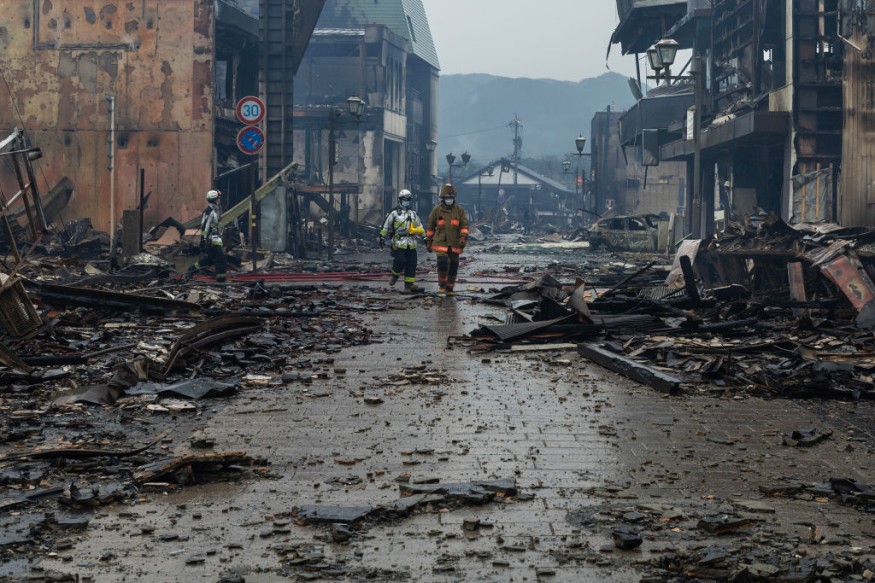
The death toll in the powerful earthquake that hit Japan has increased to 62. Unfortunately, this number is expected to rise.
According to authorities, more than 300 individuals were wounded, noting that 20 of them have been seriously hurt.
Rescue Missions Hampered
Rescue teams have continued to do search operations for the survivors of the earthquake who are facing and experiencing freezing cold.
Officials, however, warned that heavy rains, landslides and repeated aftershocks could hamper their rescue missions and efforts.
To recall, it was at 4:10 p.m. local time on January 1, when the US Geological Survey's National Earthquake Information Center detected a magnitude 7.5 earthquake at a relatively shallow depth of 6 miles (10 kilometers) near the northern coast of the Noto Peninsula on the west coast of Honshu, Japan.
Based on the intensity of the tremors caused by the earthquake, officials have estimated that property and economic damages could potentially exceed $1 billion.
The strong earthquake caused severe shaking in the city of Nanao, with a population of 45,000. Meanwhile, the shaking in Tokyo were believed to be lighter.
The earthquake on Monday had induced a tsunami of nearly 3 feet (0.8 meters) in Japan.
The devastating earthquake had forced more than 31,800 people to stay in shelters for their safety.
So far, people who were evacuated from their houses huddled in auditoriums, schools and community centers.
Bullet trains in the region were also halted, but service was mostly restored. Sections of highways were also shut down.
Rescue efforts are being made so far by the local authorities, police, firefighters and other operational units. On the other hand, the number of personnel and rescue dogs is being increased to help in the operations.
Japanese Prime Minister Fumio Kishida said the central government has been trying to bring help to the worst-affected parts of the Noto Peninsula by ship because roads had been left almost impassable.
Meanwhile, Japan's Self-Defense Forces was also using helicopters to reach those cut-off villages to provide aid for those in need.
Past Quakes In Japan
The recent earthquake and tsunami had provided memories of the March 2011 Tōhoku earthquake, a powerful magnitude 9.1 that produced shaking 250 times stronger than Monday's magnitude 7.5 earthquake.
Although the most recent earthquake drew comparisons to the one that happened in 2011, it actually had more in common with the 2016 magnitude 7.0 Kumomoto earthquake and the 1995 magnitude 6.9 Kobe earthquake.
These earthquakes both happened in southern Japan. Like Monday's earthquake, those events were shallow crustal earthquakes that occurred close to and among populated areas.
Meanwhile, the 2011 Tōhoku earthquake and tsunami led to the Fukujima nuclear accident.
While there were two nuclear plants in the vicinity of Monday's quake, one was inactive and the other, the Kashiwazaki-Kariwa plant near Niigata, has been idle since its operation was shut down in 2011.
Japanese officials indicated that these plants, along with all others in Japan, were not adversely affected by the recent earthquake's shaking or the tsunami that resulted from it.
Authorities also said that while earthquakes are common in Japan, they are most frequent along the east coast of Japan's largest island of Honshu, where the Pacific and Philippine Sea plates subduct beneath Japan.
Related Article : Doomsday Fish: Sightings of Ominous Deep-Sea Oarfish Believed to 'Predict' Deadly Japan Earthquake
© 2025 NatureWorldNews.com All rights reserved. Do not reproduce without permission.





